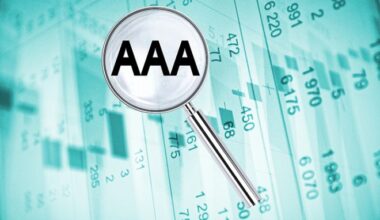A digital asset is something that only appears in digital form and comes with a specific usage right. Any data that lacks that right is not considered an asset. This is a good strategy for the investment of assets digitally, knowledge, and income and should be implemented. This article talks about digital assets marketing management with examples. It also talks about managing digital assets investment.
What are Digital Assets?
A digital asset is something that can generate value in digital form. You can still build something digitally even if it has no value.
Electronic possessions include, but are not limited to, digital documents, audible content, motion pictures, and other related digital data that are available on the market or will be stored on digital appliances such as personal computers, laptops, portable media players, tablets, data storage devices, telecommunication devices, and also any apparatus that are, or will be, in existence once technology advances to accommodate the conception of new modes.
In general, creating and keeping a digital asset must be identifiable, discoverable, and have or offer value. As technological advancements become increasingly intertwined in your personal and professional lives, digital assets have grown in popularity and value. Data, photos, videos, textual content, and other electronic possessions have long been recognized as having ownership rights.
How Do Digital Assets Work?
Blockchain technology enables decentralized digital assets such as cryptocurrencies and NFTs to function independently of any one administrator or governing body. A public ledger that records transactions for a cryptocurrency is referred to as a blockchain. Each block of transactions is organized according to its type and contains a predetermined number of transactions. Any computer or device that is capable of running the blockchain’s software can contribute to the validation of blocks of transactions and the addition of new blocks to the chain.
Blockchain technology is capable of doing more than just recording transactions, and one of its characteristics that is particularly versatile is the ability to create smart contracts. A smart contract is a computer program that is stored on a blockchain and automatically carries out its terms as soon as those terms are satisfied. Although there are many different uses for smart contracts, the one that is pertinent to our situation is NFTs.
The creation of new NFTs, as well as their purchase and sale, all take place through the use of smart contracts enabled by blockchain technology. To issue a new NFT, its creator must first create a corresponding smart contract on the blockchain of their choice. At present, Ethereum (CRYPTO:ETH) is the most widely used blockchain. The ownership of the NFT is designated by the code of the smart contract, and transferability is managed by the code as well.
Managing Digital Assets
An effective digital asset management system provides much more than a simple repository for digital data; it enables your team to organize assets in the most efficient manner for your company.
The return on investment for implementing digital management asset solution systems will differ depending on the organization and its assets. To calculate your ROI, first understand how digital asset management will affect your employees, brand, and assets. As a result, calculating the ROI of a DAM is as follows: savings on asset expenditure + additional value to the brand cost of your DAM system = ROI.
Modern digital asset systems come with enough capabilities that expedite asset management and maximize rich media output, particularly in sales and marketing businesses, such as:
- Templates and file formats have become standardizable.
- In the process of creating digital files, they should be accessible to your team to encode even. This standardization makes it easier to search for and retrieve documents.
- Metadata, Encoding, and Indexing.
- Simplify asset search and enable digital content identification using attributes and identifiers that generate an index that unites assets by common tags to increase searchability.
- Version Management.
- Ensure that only the most recent, up-to-date assets are accessed, used, and stored for future use.
- Controlling Governance and Permissions.
- Theft, inadvertent corruption, or erasure of organizational assets are all prevented.
- Asset Evaluation.
- Ensures that a firm’s technology, digital assets, and processes are in accordance with company regulations.
Digital Assets Management
A DAM is a software system that is useful, especially to centrally store and manage electronic assets. However, a centralized management solution gives internal and external stakeholders controlled access to all of their digital assets, including pictures, images, creative files, video, audio, presentation decks, documents, and much, much more. It’s simple to use and simple to implement. Above all, DAM systems enable increased campaign productivity and brand consistency.
The Top Business Applications for Digital Asset Management
DAM systems can assist digital asset managers in automating organizational activities in order to improve overall productivity and efficiency. The following below summarizes the primary responsibilities of a digital asset manager.
#1. A Centralized Asset Storage Facility
Maintain a collection of properly cataloged assets, including information about usage rights, current usage, and context.
#2. Branding Consistency
Ensure that relevant and up-to-date versions of digital marketing assets are easily searchable and that access permissions are only changed by authorized individuals.
#3. Productivity Is Really High
They create effective tools for finding and using digital content. Publish clear and up-to-date usage and licensing data.
#4. Consistency in Content Usage
Apply timestamps to material, automate content expiration dates, limit channel assets, and enforce company-wide compliance with content development and distribution regulations to achieve uniformity of content usage.
#5. Timely and Accurate Reporting
Analyze and report on metrics related to access, consumption, and the lifecycle of electronic assets on a regular basis, including statistics on audience interaction.
#6. License and Copyright Observance
Ascertain that the appropriate licensing and copyright information is included with the content. Upon license expiration, automate the deletion of the published content.
#7. The Nomenclature Is Precise, Descriptive, and Consistent
Make certain that the file names for electronic assets are descriptive, accurate, and consistent, and reflect how the assets connect to other files in the system.
#8. Metadata Labeling
Tag electronic assets with essential details in the form of metadata, such as the creation date, file name, file type, and file category, for better organization and ease of search and usage. Check to see if the IPTC metadata has been stored in the file.
Digital Assets Examples
A digital asset, of course, is a critical component of digital asset management, defined as any type of uniquely identified media that exists in a digital format and is legally owned by the organization.
A digital asset might be anything in the age of digital transformation. In fact, any file that you have the legal right to use is regarded as a digital asset, which includes:
- Documents,
- Images,
- Mp3 files,
- Videos
- Logos,
- Slide pover points
- Presentations,
- Spreadsheets,
- Graphics,
- PDFs,
- Models in 3D,
- Animation, etc.
These media files are available in a variety of formats, including PNGs and JPGs for photos, WAVs and BWFs for audio, PSDs, and TIFFs for design files, PDFs, Word docs, and others.
Every firm, regardless of the file or media type, will undoubtedly amass thousands of electronic assets. As your media collection expands, so will your team’s requirement to find, store, and share materials in a way that allows them to be used successfully. A digital asset management system can help with this.
Digital Assets Investment
Digital investment assets are a prominent asset class for investors looking to profit from the trend. Although digital assets can be unpredictable, they also offer an opportunity to invest early in technology that will most likely be utilized more frequently in the future.
A well-balanced investment digital portfolio has the distinct mix of assets that each investor requires to match their risk tolerance as well as their long-term growth and income objectives. Banks, hedge funds, private equity firms, venture capital firms, corporate treasuries, and family offices, according to Cordero, have all made allocations to digital assets. Electronic assets must be entirely electronic or incorporate tokens that represent tangible possessions.
For example, Bitcoin is a virtual digital currency. And, while virtual money is still a notion that many traditional investors struggle to fathom, one just needs to look at some of the world’s Bitcoin (a sort of cryptocurrency) millionaires to know that its worth is just as genuine as any other asset class in which an investor might diversify.
Diversification, according to Dan Egan, Betterment’s director of behavioral finance and investing, isn’t just about investing in diverse asset classes, but about investing in asset types that respond independently and oppositely to one another.
This entails paying attention to chances that pique your interest and investing in those that fluctuate in price at different times. Looking at a mix of equities and bonds from various industries is a fantastic way to achieve this balance.
How Digital Assets Work
Decentralized digital investment assets such as cryptocurrencies and NFTs rely on blockchain technology management to operate without a central authority. A blockchain is a public ledger that stores bitcoin transactions. Each block contains a set of transactions. Any device that runs the blockchain software aids in the validation of transaction blocks and their addition to the chain.
Smart contracts, one of the most diverse characteristics of blockchain technology, can do more than just record transactions. A smart contract is a program that runs on the blockchain and executes automatically when specific circumstances are satisfied. While smart contracts have several uses, NFTs are the most important in this scenario.
Blockchain technology is utilized to mint, buy, and sell NFTs through smart contracts. To mint an NFT, the author creates a smart contract for it on their preferred blockchain, which is Ethereum (CRYPTO:ETH). The smart contract code assigns ownership and regulates the transferability of the NFT.
Digital Assets Marketing
In the world of digital marketing, digital marketing assets are valuable goods. In other words, they are assets since they increase the effectiveness of digital marketing for those who hold them. Because it is subjective, a number of different items can be deemed digital marketing assets. However, there are several assets that most businesses hold in some manner.
Social network profiles, company websites, email themes, data, photos, audio, video, and blogs are common examples of digital marketing assets. Of course, this is only a small sample of assets and does not represent the assets of every organization. Furthermore, businesses may see a wide variety of digital goods as marketing assets.
Examples of Digital Marketing Assets
Now that you have a firm grasp on digital marketing assets, consider the following instances, which demonstrate their potency.
- Social media accounts
- Websites
- Data
What Are Examples of Digital Assets?
There are a few;
- PDFs.
- Video.
- Presentations.
- Files containing audio.
- Images.
- Spreadsheets.
- Graphics.
- Files for design.
What Are Digital Asset Investments?
Digital investment assets are any assets that exist in digital form and come with the right to use them. Examples include digital assets related to bitcoin and blockchain technology. Cryptocurrencies, non-fungible tokens (NFTs), and virtual real estate in the metaverse are examples of these.
Is Cryptocurrency a Digital Asset?
The word “cryptocurrency” refers to a sort of digital asset that can be used as a means of exchange and whose ownership is recorded using a blockchain or other distributed ledger technology based on encryption. Cryptocurrency is a sort of digital asset that is intangible digital money that secures and verifies transactions as well as controls the generation of new units of currency.
What Are Valuable Digital Assets?
You’ve paid for and downloaded ebooks, software, and digital music files. Your social media profiles, as well as all of the content you’ve shared. All the online accounts you’ve created, as well as any information or credit associated with them (including loyalty points and game credits), your websites, and domain names will become valuable electronic assets.
How Do Digital Assets Make Money?
There are a few;
- Purchase and HODL (hold).
- Cryptocurrency should be staked.
- Run Bitcoin Master Nodes.
- Cryptocurrency Lending
- Mining.
- Trading during the day
- Arbitrage in cryptocurrencies.
- Work for cryptocurrency.
How Can I Create Digital Assets?
These are some examples of how to create digital investment assets below:
- Work quickly and efficiently.
- Understand the objectives.
- Screen brightness can be adjusted.
- Save your assets properly.
- GIFs must be used correctly.
How Do I Invest in Digital Assets?
The following are some methods for investing in digital assets:
- Look into a niche.
- Register with ODYS.
- Fill Out Your Information.
- Invest in a Relevant Domain.
- Create the Website.
- Rank as well as Bank.
What Digital Assets Can You Sell?
There are a few;
- Educational supplies.
- Use of your electronic assets.
- Sites that provide memberships.
- Templates and tools for digital use.
- Art or music.
- Services.
How Do I Own Digital Assets?
Using an exchange such as Coinbase or perhaps an online brokerage such as SoFi or Robinhood to get started investing in digital assets is the simplest way to get started with this type of investing. These systems take care of the technicalities of investing in your best interests, including, if necessary, the creation and maintenance of a digital wallet on your behalf.
What Are Digital Assets NFT?
A non-fungible token, also known as an NFT, is a one-of-a-kind digital asset that represents ownership of physical items such as works of art, video clips, musical compositions, and other forms of media. Despite the fact that they are not currencies, NFTs are powered by the blockchain technology that underpins cryptocurrencies.
Is Bitcoin an NFT?
NFTs are non-fungible tokens. Therefore, in contrast to traditional cryptocurrencies such as Bitcoin, they cannot be traded for one another under any circumstances. Because every single NFT is unique, each one of them has a different value. NFTs are used quite frequently to represent digital objects such as music, art, and other types of virtual assets.
Can You Make Money From Digital Assets?
People frequently think of cryptocurrencies and non-fiat currencies (NFTs) when they consider digital assets. If you are knowledgeable about how the market works, purchasing assets of this kind can be a lucrative investment. You can even make your own NFTs and potentially profit from them if you are a creative person such as an artist or someone else in the creative field.
Conclusion
As the economy grows so as technology. Individuals’ assets are now obtained digitally and can be for future use or can sell it for income. This is a good strategy for making income and obtaining assets digitally. This article teaches about “digital assets.”
DIGITAL ASSETS FAQs
What exactly are digital assets in the banking industry?
Digital assets have been recognized as a change agent in financial markets. Cryptocurrencies, stablecoins, central bank digital money, initial coin offers, security token offerings, and so on are examples.
How do I purchase digital assets?
- Look into a specific niche.
- Join ODYS today.
- Register Your Information.
- Get a Relevant Domain.
- Create the website.
- Bank and Rank.
Are digital assets the way of the future?
Digital assets are the way of the future. The variety of investable assets kinds will grow dramatically in the next years. Businesses in the financial sector, as well as those in the industry, should become acquainted with the new prospects presented by this next stage of digitization.
Related Articles
- DIGITAL ASSETS MANAGER: Job Description, Salary & Best Practices
- Blockchain Technology Simplified!!! (+ All you Need)
- DIGITAL MARKETING CHANNELS: Most Effective Digital Marketing Channels for Your Business
- Starting Your Own Digital Marketing Business
- 2 Quick Ways to Update Your Old PDF Files






